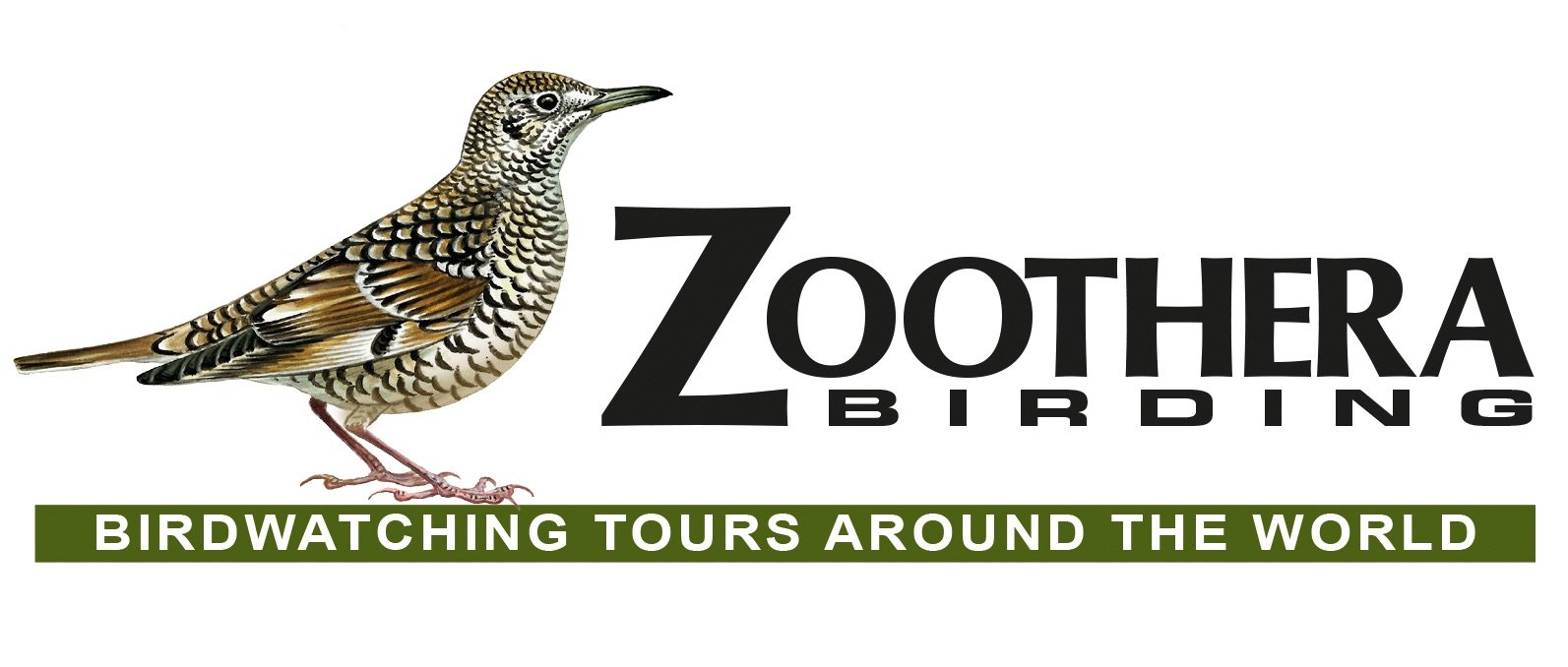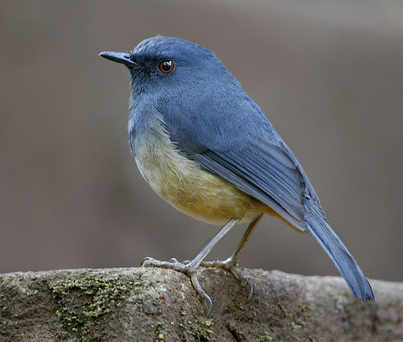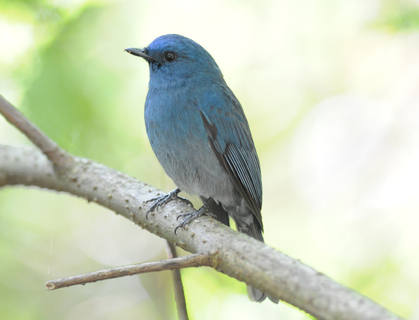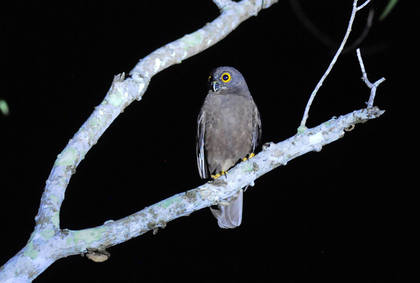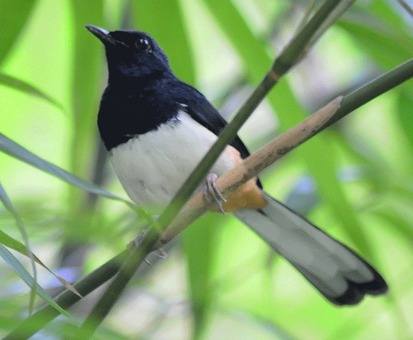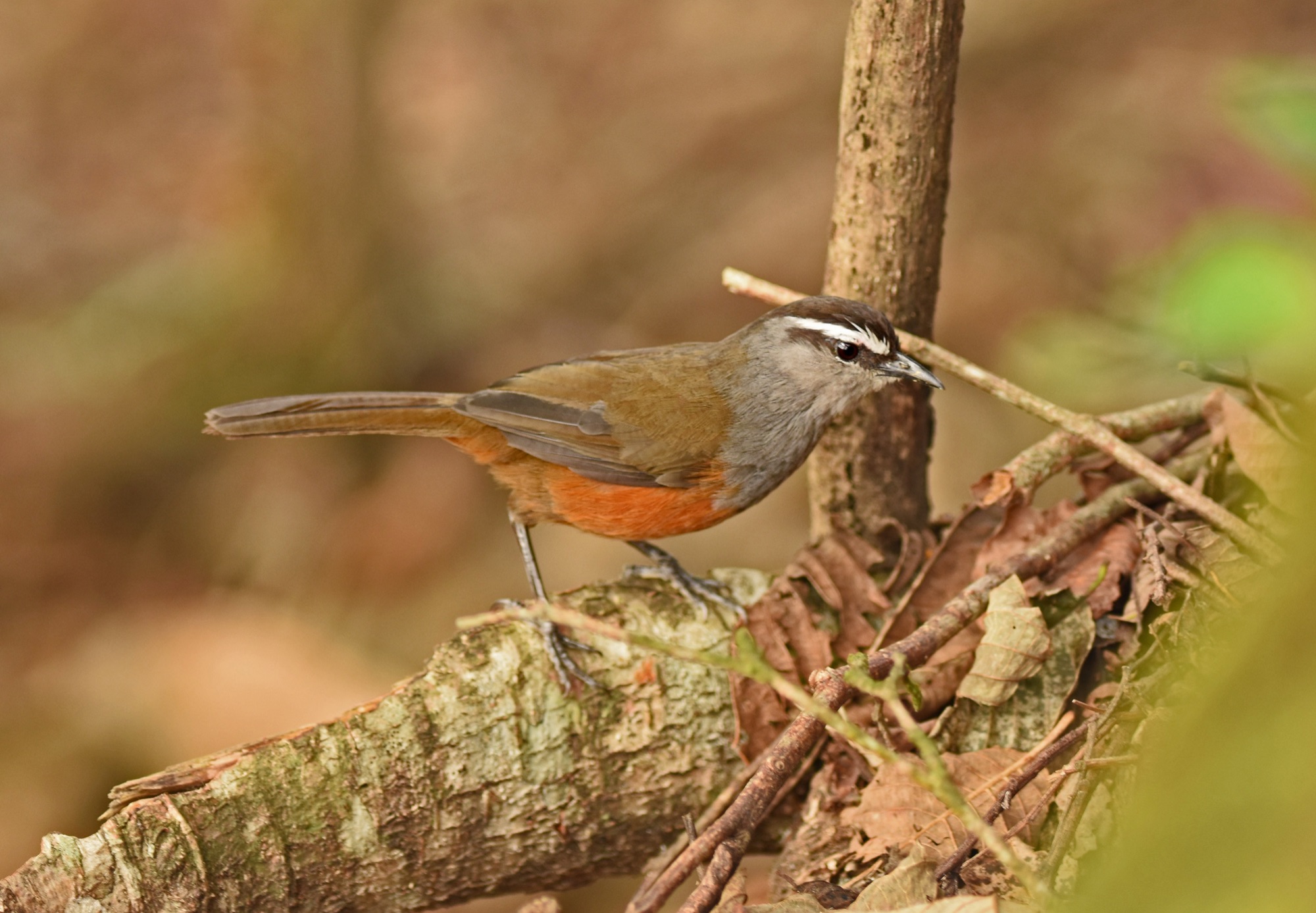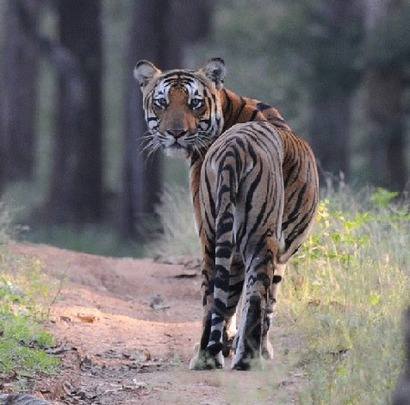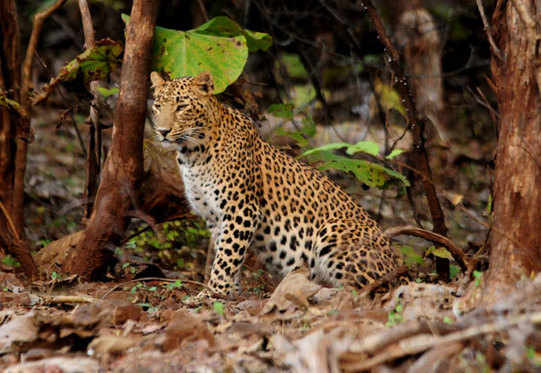SOUTH INDIA & ANDAMANS
Day 1 Arrival in Chennai - 11th January
Arrivals in Chennai and transfer to a nearby hotel. Please note this is purely an arrival day. If arriving in the morning, and If time permits, there is the chance of some optional birding this afternoon at Vedanthangal Bird Sanctuary, which is around a 90 minute drive away. There is a large colony of breeding Asian Openbills, Black-headed Ibis, and both Little and Great Egrets here, plus the surrounding fields and marshes hold Montagu's Harrier, Yellow-wattled Lapwing, Wood Sandpiper and a good variety of other common Indian birds. Night in Chennai.
Days 2 - 5 Chennai - Port Blair - Andamans
After breakfast we will transfer to Chennai airport where we take the 2 hour morning flight across the Bay of Bengal to Port Blair arriving around midday. As the Andamans is a restricted area, we might have to go through some permit formalities, but normally this doesn’t take very long. We will then transfer to our hotel which will be our base for the next 4 nights. After all of our travelling we can take the opportunity to rest during the middle of the day when bird activity is at its lowest before venturing along the coast to look for our first endemic, Andaman Teal. Skirting the edge of a forest, there should be some fruiting trees which could provide us with Andaman Green-pigeon, whilst Andaman Woodpecker can be found nearby. As the sun slowly sets beyond the horizon we can begin our quest for the Andaman’s highly-prized night birds with chances of Andaman Scops-owl, Andaman Barn-owl, Hume's Hawk-owl, Andaman Hawk-owl and Andaman Nightjar. The rest of our time will be spent mainly on the forested slopes of Mount Harriet which is the best site to notch up most of the Andaman endemics. Here we can find Andaman Crake, Andaman Serpent-eagle, Andaman Cuckoo-Dove, Andaman Woodpigeon, Andaman Green-pigeon, Andaman Coucal, Andaman Drongo, Andaman Treepie, Andaman Cuckooshrike, Andaman Bulbul, Andaman Shama, Andaman Flowerpecker and Andaman White-headed Starling. Other more widespread species we can find in different patches of forest include Besra, Changeable Hawk-Eagle, Green Imperial-pigeon, Alexandrine, Red-breasted and Long-tailed Parakeets, Spot-breasted Woodpecker, Violet Cuckoo and Edible Nest Swiftlet. Searching of the coastal marshes, mangroves and extensive sandy beaches can produce Chinese Pond-heron, Grey-headed Swamphen, Watercock, Yellow Bittern, Slaty-breasted Crake, White-bellied Sea-Eagle, Pacific Golden Plover, Long-toed Stint, Lesser and Greater Sandplovers, Black-naped Tern, White-bellied (Glossy) Swiftlet, Ruddy, Stork-billed and Collared Kingfishers, Mangrove Whistler, and both Black-browed and Oriental Reed-Warblers amongst others. Nights Port Blair.
Day 6 Port Blair - Chennai - Kochi - Thattekkad
After some final birding this morning we will take the early afternoon flight from Port Blair to Chennai. And then continue with an internal flight departing early evening to Kochi (Cochin). Upon arrival we will head to Soma Birds Lagoon Resort at Thattekkad for a 3 night stay.
Days 7 - 8 Thattekkad Bird Sanctuary
Thattekkad Bird Sanctuary, also known as Salim Ali Bird Sanctuary, is a prime birding destination in South India. Amongst a fine selection of species we will search for endemics such as Red Spurfowl, Grey-fronted Green-pigeon, Malabar Grey Hornbill, White-bellied Blue Flycatcher, Malabar Whistling-Thrush, Grey-headed Bulbul, Malabar Woodshrike, Wynaad Laughingthrush, Indian Rufous Babbler and White-bellied Treepie. Other specialities of the area include Spot-bellied (Forest) Eagle-Owl, White-bellied and Heart-spotted Woodpeckers, Ceylon Frogmouth, Malabar Trogon, Blue-faced Malkoha, Rusty-tailed Flycatchers, and there is always a chance of Oriental Bay Owl. Midday is a good time to relax for few hours during the heat of the day and then one afternoon we will visit some scrub habitat on a hillside strewn with flat boulders – an ideal place to look for nightjars including Great-eared, Jerdon’s, Indian Jungle and Savanna. The same area also holds Grey Junglefowl, Jungle Owlet, Plain Flowerpecker, Chestnut-headed Bee-eater and many other species. There are also some superb forest areas outside of Thattekkad Bird Sanctuary where some key species include endemics such as Flame-throated Bulbul and Malabar Woodshrike. A shady spot along the Periyar River can produce Lesser Fish-eagle and other species like Dollarbird, Brahminy Kite, Indian Golden and Black-naped Orioles, the endemic Malabar Barbet and Golden-fronted Leafbird. There is also a small drinking puddle in the forest where the last remaining few hours of the day sometimes produces good passerines including Indian Blue Robin, both Blue-throated and Tickell’s Blue Flycatchers, Puff-throated Babbler and Orange-headed Thrush. The surrounding area has Brown-breasted Flycatcher, Malabar Trogon and Malabar Parakeet. There are plenty of other birds in the area such as Crested Goshawk, Brown Hawk-owl, Lesser Yellownape, Heart-spotted Woodpecker, Plum-headed Parakeet, Mountain Imperial-pigeon, Indian Swiftlet, Blue-bearded Bee-eater, Black-naped Monarch and Black-throated Munia.
Days 9 - 10 Thattekkad - Munnar - Eravikulam National Park
After some final birding around the signalling station near Thattekkad looking for Red Spurfowl, Black Baza, Asian Drongo Cuckoo and Black-throated Munia, we will drive a couple of hours to Munnar. Situated at 1450m amidst a major tea producing region we will search the pockets of Shola (natural evergreen) forest and Nilgiri mountain grassland which are home to several endemic birds and various mammals including the endemic Nilgiri Tahr. Considering the ecological, faunal, floral, geo-morphological and zoological significance, it was declared a National Park in 1978 and covers an area of 97 sq. kms of rolling grasslands and high level sholas. The higher altitude of this section of Eravikulam National Park means an agreeable climate throughout the year, though at this time of year it could be decidedly chilly in the early mornings. Here we will look for several of the South Indian and Nilgiri Hills endemic bird species. Key species here include Painted Bush-quail, Nilgiri Woodpigeon, Kerala (Grey-breasted) Laughingthrush which inhabits the Rhododendron covered valleys, as well as White-bellied Blue Robin, Nilgiri Woodpigeon, Nilgiri Pipit, Crimson-backed (Small) Sunbird, Nilgiri Flycatcher, Malabar Whistling-thrush and Indian Scimitar-babbler. Towards the end of the afternoon we will visit a tea shack with an excellent vantage point across an extensive wooded valley. We can keep watch for Bonelli’s Eagle, Grey-fronted Green-pigeon, Heart-spotted Woodpecker, Malabar Barbet, Vernal Hanging-parrot, Asian Fairy-bluebird, Rusty-tailed Flycatcher, Yellow-browed Bulbul, Little Spiderhunter, Brown-cheeked Fulvetta and Golden-fronted Leafbird. We may well wake up the following morning with a singing Malabar Whistling-thrush as our alarm call before checking out a nearby site for the difficult Broad-tailed Grassbird. Nights at Munnar.
Day 11 Munnar - Topslip - Anamalai Wildlife Sanctuary
After an early breakfast and a couple of hours to catch up with any species still needed we will set out on the drive to Topslip. Birds on the journey might include Brahminy Kite, Indian Roller, Paddyfield Pipit and Chestnut-headed Bee-eater. Situated in the Anamalai Hills, Topslip is situated in the heart of the Anamalai Wildlife Sanctuary and is one of the best natural history locations in Southern India. It is home to a couple of very special endemics, White-bellied Blue Flycatcher and White-bellied Treepie, which we will make a special effort to find. Birdwatching in the forest can prove a challenge, so we will concentrate on the forest edge habitat where we can find such local species as Jerdon’s Nightjar, White-naped, Heart-spotted and White-bellied Woodpeckers, Common Flameback, Malabar Grey Hornbill, Grey-headed Bulbul, Malabar Trogon, Dark-fronted Babbler, Wynaad Laughingthrush, Malabar White-headed Starling and Black-throated Munia. More widespread species here include Jungle Owlet, Emerald Dove, Brown-throated Needletail, Indian Swiftlet, Lesser Yellownape, Greater Flamebacks, Blue-bearded Bee-eater, Great Pied Hornbill, White-browed Bulbul, Orange-headed Thrush, Indian Pitta, Asian Fairy-bluebird, Loten’s Sunbird, Black-hooded Oriole, Rusty-tailed, Asian Brown and Brown-breasted Flycatchers, Thick-billed Warbler, Puff-throated Babbler, and many other species. Some night birding could produce Oriental Scops-owl, Night at Topslip.
Days 12 - 13 Topslip - Ooty
We will make the most of the first couple of hours after daybreak to check out another nearby area where we should see the endemic Indian Rufous Babbler and Flame-throated Bulbul, before setting off to the steep forested slopes of the Nilgiri Hills at Ooty, or to give its full name, Ottacamund. This old hill station in the Western Ghats is situated at 2250m and provides opportunities to find plenty of cracking species to look for and none more so than the beautiful endemic Black-and-orange Flycatcher. Other special birds include Nilgiri Woodpigeon, Nilgiri Blue Robin, Indian Blackbird, White-bellied Blue and Nilgiri Flycatchers, Nilgiri (Black-chinned) Laughingthrush, Malabar Whistling-thrush and Malabar Barbet. Other species here include Indian Black Eagle, Vernal Hanging-Parrot, Hill Swallow, Indian Blue Robin, Blue-capped Rock-thrush, Blue-throated Flycatcher, Jerdon’s Leafbird, Yellow-browed Bulbul, Square-tailed Black Bulbul, Bar-winged Flycatcher-shrike, Indian Yellow Tit, Bright-green, Large-billed and the tricky Tytler’s Leaf-warblers, and sometimes Kashmir Flycatcher. Nights at Ooty.
Day 14 Ooty - Mudumalai
This morning will see us patiently waiting for a glimpse of Grey Junglefowl as it comes out to feed at the edge of a secluded forest track at first light and we have further chances to find species such as Indian Scimitar-babbler, White-spotted Fantail, Tickell’s Leaf-warbler or Olive-backed Pipit. From here we will head to Mudumalai and probably be able to take things a little easier today and relax around the resort for a while. In the afternoon we can explore some excellent dry scrub areas that are sure to add some new species to the list, such as Woolly-necked Stork, Yellow-wattled Lapwing, Malabar Parakeet, Yellow-crowned Woodpecker, Jerdon’s Bushlark, Yellow-billed Babbler, Black-headed Cuckooshrike and possibly White-bellied Minivet if we are lucky. Our last tour also produced the rare and very shy Nilgiri Thrush here as well. Night at Mudumalai.
Days 15 - 16 Mudumalai - Nagarhole
We will make the best of the early morning again and check out some nearby areas before heading to Nagarhole. Along the way we can break the journey with a few stops and we may see species such as Small Pratincole, Indian Black Ibis, Red Avadavat and Ashy-crowned Sparrow-Lark. But our ultimate destination will be the varied habitats, dominated by extensive dry deciduous forests at Nagarhole. Key species here include Grey Junglefowl, White-cheeked Barbet, Indian Rufous Babbler, Malabar Parakeet, Malabar Lark, White-naped Woodpecker, Changeable Hawk-eagle and Orange Minivet. Not far from our lodge the Kabini River has been dammed and the resulting lake, together with its well-vegetated margins and stark, dead, partly submerged trees offer perfect vantage points for the resident Grey-headed Fish-Eagle to search for its prey. Around the lake there are numerous birds to watch including Black-headed Ibis, Indian Spot-billed Duck, Brahminy Kite, Black-bellied Tern, Stork-billed Kingfisher, Indian Swiftlet and Ashy Woodswallow. Several pairs of Malabar Pied Hornbill can also be seen here too and there are usually one or two Jerdon’s Nightjars sitting on the trails at dusk, and later in the evening we can find Indian Scops-owl or Brown Hawk Owl. Nagarhole and the contiguous Bandipur National Parks are a haven for mammals, though seeing the resident creatures requires a good deal of luck, especially as a third of the total area of these parks is designated a Wilderness Area from which human visitors are excluded. It is estimated that over a thousand Indian Elephants roam the mighty tracts of forest and at times large herds assemble at favoured locations near water sources such the banks of the Kabini River. The massive Indian Bison, or Gaur, is another valued resident of the park occurring in herds of up to 20 to 30 animals, placidly grazing the emerging grasses. Wild Boar is numerous and, along with the Chital, they provide prey for a formidable trio of predators: Tiger, Leopard and Dhole. Other mammal sightings include the mostly nocturnal Sloth Bear, which can occasionally be seen digging for termites or lumbering across a clearing, Black-naped Hare, Golden Jackal, Otter, four species of mongoose and the constantly active troupes of Grey Langur and Bonnet Macaques are all regularly seen. In the world of mammal-watching nothing can ever be guaranteed, but Nagarhole is a perfect place to look for some of the most impressive examples of India’s diverse fauna. We’ll spend two nights at the perfectly located Kabini River Lodge whose surroundings can often produce Mottled Wood-owl, Brown Fish-owl, Crested Treeswift, Indian Pitta, Malabar Lark, Forest Wagtail, Asian Paradise-flycatcher and Plum-headed Parakeet, whilst the distinctive call of Asian Koel will become a familiar sound. We will enjoy afternoon and morning jeep safaris to get the very best out of this naturalist’s paradise, as well as taking a leisurely boat trip on the lake in the late afternoon. Additional species we should see include Red-headed Vulture, Crested Hawk-eagle, Oriental Honey Buzzard, Indian Grey Hornbill, Yellow-footed Green-pigeon, Indian White-rumped Spinetail, Crested Treeswift, Velvet-fronted Nuthatch, Black-hooded and Indian Golden Orioles, Small Minivet, Large and Black-headed Cuckooshrikes, Common Iora, Greater Racket-tailed and White-bellied Drongos, Grey-breasted Prinia, Purple-rumped Sunbird, Yellow-billed Babbler, Lesser Hill Myna, Grey-headed Starling, and Pale-billed Flowerpecker. Nights at Kabini River Lodge.
Day 17 Nagarhole - Mysore
An early start will enable us to check out some good roadside habitat on the way to Mysore, where Montagu’s Harrier, Pheasant-tailed Jacana, Malabar Grey Hornbill, Blue-faced Malkoha, Malabar Lark, and both Blue-tailed and Little Green Bee-eaters can be found. Our initial exploration will concentrate on an open area for the tricky endemic Yellow-throated Bulbul, as well as Rufous-tailed Lark and Long-billed Pipit. In the afternoon we will go to an area where it is still possible to see White-rumped or Indian Vultures coming in to roost. Night Mysore.
Day 18 Mysore - Bangalore - End of Tour - 28th January
An early morning visit to the wonderful Ranginathittu Bird Sanctuary will be well worthwhile as we can take a boat trip on the Cauvery River and be treated to seriously close-up views of the breeding stork and egret colony. Stunning views of Painted and Woolly-necked Storks, Asian Openbills, Great Thick-Knee, Streak-throated Swallow and all the usual egrets and herons will provide a fitting finale to this wonderful tour. Afterwards we will drive to Bangalore and our evening flight back to the UK.
Day 19 End of Tour - 29th January
Morning arrival in UK and end of the tour.
